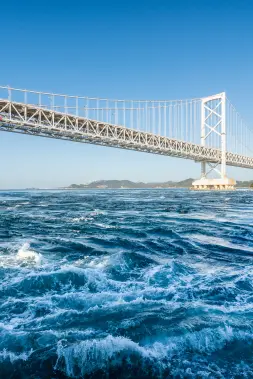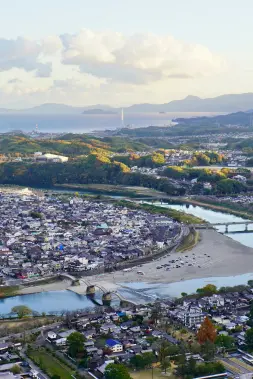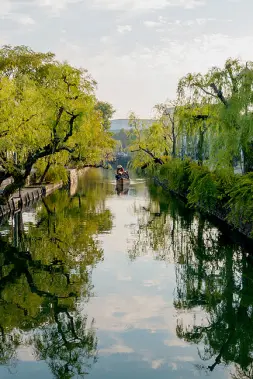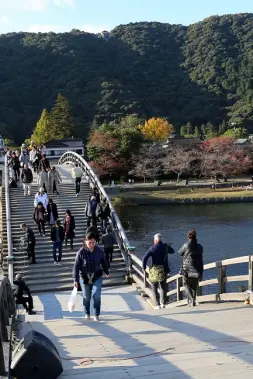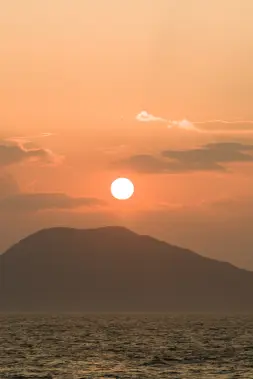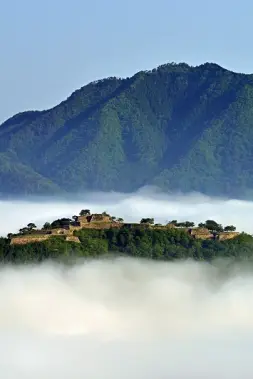Adventure & Experience
Bridges and Castles, Shrines and Spirits in Iwakuni and Hiroshima

-
- RELATED TAGS
-
- LAST UPDATED
- 22 March, 2022
On the western shores of the Seto Inland Sea, Iwakuni and Hiroshima contain a few of Japan’s most iconic sights. Together they bear witness to the nation’s rich history through enduring expressions of engineering, architecture, spirituality, and resilience in the face of both weather and war.
Walk across Kintaikyo, Iwakuni’s historic handcrafted bridge
Iwakuni’s distinguished Kintaikyo (錦帯橋) is one of Japan’s three most famous bridges, spanning the Nishiki River with its five bold wooden arches in a feat of engineering that is unique worldwide. It’s the pride of the city, spotlighted every night by colored floodlights on the riverbanks, highlighted by fireworks over the river every year in August, and even grandly celebrates its own annual festival on April 29, when Iwakuni residents honor their ancestors who built and have been rebuilding the original bridge since 1673.
In order to prevent the spread of the new coronavirus infection, all events for the Kintai Bridge Festival in 2021 were canceled.
Indeed, one reason why Kintaikyo is so cherished is the survival of its essence over the centuries, maintained by local carpenters who pass down techniques from generation to generation. Pillars of the original bridge collapsed after a violent storm struck just months after it was first constructed, but the bridge was promptly rebuilt with reinforced piers in 1674. It remained intact for 276 years until it was damaged by a typhoon in 1950 and finally reconstructed with traditional timber according to its original design.
In 2004, the bridge was renovated and reinforced with Japanese cypress according to its Edo-period prototype using a timberwork technique of wedges, crossbeams, and ridge beams joined by metal belts and nails. You can see the fine craftsmanship of the bridge’s complex quake-proof underside from either shore.
By day, Kintaikyo’s subdued hues blend into its natural surroundings, where its wing-like wooden arches and imposing stone piers create an alluring contrast of solidity and lightness. Crossing the five-span wooden arches feels like a walking roller-coaster, with no time limit for enjoying the views all around. Almost every evening, photographers set up their tripods on both sides of the river to capture the nighttime illuminations.
Hike up to Iwakuni’s white castle on the mountain
Kintaikyo was first built as a permanent bridge connecting the two districts of samurai and merchants’ residences on either side of the Nishiki River. The 200-meter-wide river served as a natural moat for the castle perched atop Mount Shiroyama, where its original stone base still remains. The castle itself was demolished in 1615, just seven years after its construction, in accordance with the shogun’s decree of “one province, one castle” (ikkoku ichijo).
The present Iwakuni Castle Tower (岩国城天守) is a 1962 reconstruction that reflects the quintessential image of the white castle on the hill. Its compact square structure is visible from Kintaikyo and also illuminated at night as if completing the scene of an Edo-period ukiyo-e.
After strolling through the peaceful Kikko Park, you can either hike up the mountain or take a ropeway to another quiet forested area at the top. The inside of the castle is filled with displays of samurai swords, armor, artworks, and other items related to its history. But what’s definitely worth the trek is the sweeping panoramic view from the watchtower overlooking the city of Iwakuni, where you can see Kintaikyo in the context of the snaking Nishiki River and the Seto Inland Sea beyond.
View the bridge from a hot spring bath at Kintaikyo Onsen Itsutsubashi no Sato
Situated on the east bank of the river, the luxury Iwakuni Kokusai Kanko Hotel offers a more intimate view of Kintaikyo from its in-house Kintaikyo Onsen Itsutsubashi no Sato (錦帯橋温泉いつつばしの里). Not only can you gaze at the famous bridge foregrounded against the lush forest of Mount Shiroyama, but you can also choose from several different types of hot spring baths, or even relax in a private open-air bath inside your own guest room. Both the resting area and the corridor visitors use to access the public onsen are made with materials from Kintaikyo when the bridge was last restored in 2004.
Taste craft spirits made in Hiroshima at Sakurao Distillery
On your way into central Hiroshima, a 10-minute walk from JR Hatsukaichi station, you’ll find Sakurao Distillery (桜尾蒸留所), founded in 2017 to celebrate the 100th anniversary of Sakurao Brewery and Distillery. It also marked the launch of its Sakurao Japanese craft gin made with local ingredients such as lemon and other citrus, juniper berries, oyster shells, and cherry blossoms, distilled using traditional English distillation methods and cultivated in the mountainous climate of Aki in the northeast of Hiroshima city.
Sakurao Distillery offers a tour of its production processes for malt whisky, grain whisky, and gin, including the botanicals used and a custom-made still used to distill its grain whisky. After visiting the four zones of the distillery, you can enjoy tasting Sakurao’s freshly distilled spirits on-site. (Please note that the tour is temporarily suspended due to coronavirus prevention measures, so be sure to check availability with Sakurao Distillery before you visit.)
Pray for peace at Hiroshima’s Atomic Bomb Dome
Walking across the intimidating expanse of the Peace Memorial Park, it’s hard to imagine that this vast triangle of land bordered by two rivers was once a busy commercial and residential area of downtown Hiroshima. Yet, still today, more than 75 years after the first atomic bomb in history was dropped at 8:15 AM on August 6, 1945, the Atomic Bomb Dome, which still exists, shows the devastation caused by the atomic bombing.
The atomic bomb “Little Boy” was dropped on a sunny day in Hiroshima, and exploded 600 meters above the ground, creating a shock wave that traveled faster than the speed of sound. The former Hiroshima Prefectural Industrial Promotion Hall, located almost directly underneath the bomb, was completely destroyed and burned down by the blast and heat rays, but the thick outer walls and the steel frame of the dome survived the collapse. It is thought that there were 350,000 people in Hiroshima at the time, but it is estimated that around 140,000 people had died by the end of 1945.
You can walk all the way around the Atomic Bomb Dome to see how various parts of the crumbling structure resisted or succumbed to the overwhelming force of the explosion, and then imagine the impact on an entire city. The site was designated as a World Heritage Site in 1996, and Hiroshima persists in preserving the Atomic Bomb Dome at its exact state of destruction as a testament to the disasters of nuclear weapons.
As the last surviving generation of hibakusha (atomic bomb survivors) continues to plead for peace and an end to nuclear weapons, new generations help to educate the public about the long-lasting, devastating effects of nuclear radiation.
On the day I visited, a lively elderly woman in a purple beret holding a binder of archival photos and documents had drawn a crowd of people. They were listening intently to her recount in detail the simmering sequence of events leading up to and following the deadly blast. I couldn’t help wondering how she had experienced the bomb personally, and where she had been at that fateful moment.
Nearby was a bicycle with a large box attached to its rear rack. On the side of the box was a photo of the Atomic Bomb Dome overlaid with the words “NO MORE HIROSHIMAS”. Hanging from the other side of the box was a sign that directly answered my question—this volunteer guide had been inside her mother’s womb at the time of the blast.
While Iwakuni literally bridges us to its past as a samurai town centered around its locally engineered, handcrafted Kintaikyo, Hiroshima invites us to savor the present moment standing before Itsukushima Shrine, a World Heritage Site famous for its red torii gate floating on the sea, and propels us into a possible future where reconstruction and resilience build hope for peace.
Both Iwakuni and Hiroshima are accessible by train on the Tokaido Shinkansen line. The local JR Sanyo line connects the two cities in about 50 minutes. There are also several ferry connections between Miyajima Pier and Hiroshima-ko Pier, and even directly to the Peace Memorial Park on the World Heritage Sea Route.
Photographs and text by Cherise Fong
RELATED DESTINATION
Hiroshima
Hiroshima is the central city of Chugoku region. Hiroshima Prefecture is dotted with Itsukushima Shrine, which has an elegant torii gate standing in the sea; the Atomic Bomb Dome that communicates the importance of peace; and many other attractions worth a visit. It also has world-famous handicrafts such as Kumano brushes.





































